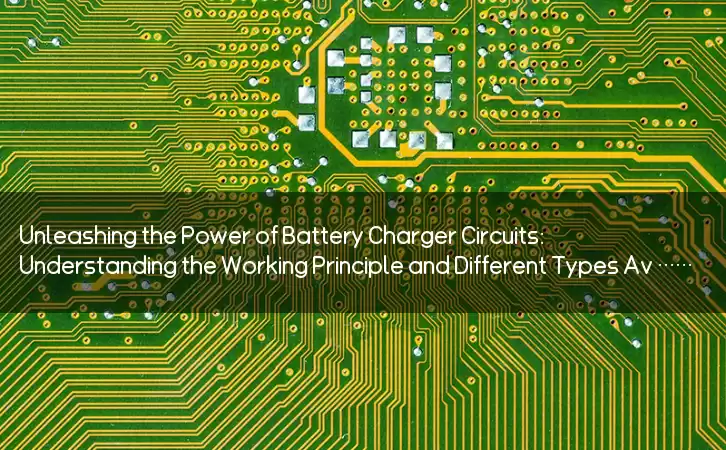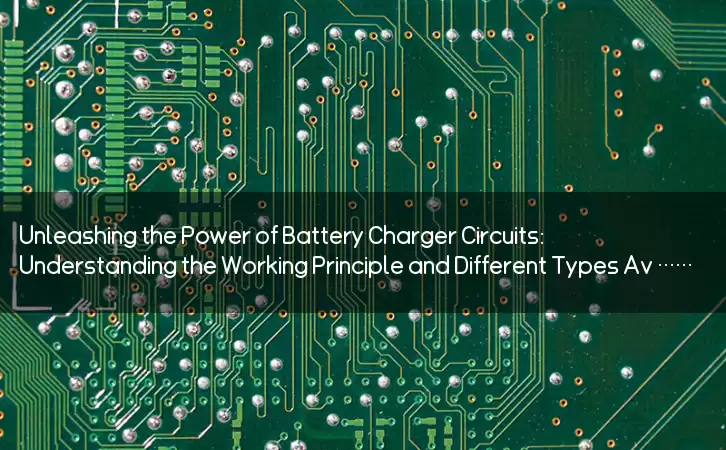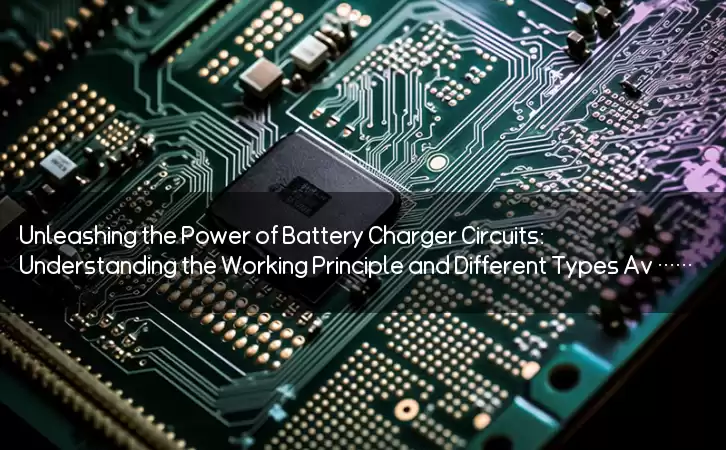Information Center
Unleashing the Power of Battery Charger Circuits: Understanding the Working Principle and Different Types Available in the Market
Published:2023-09-05 10:33:51 Author:Green WCND Views:75Battery chargers are an essential component of modern electronics. Whether it be smartphones, laptops, or electric cars, batteries require charging. A battery charger circuit is a device used to supply an electric current to a rechargeable battery or battery pack to restore its energy storage capacity. In this article, we will discuss the working principle and different types of battery charger circuits available in the market.

Working Principle of Battery Charger Circuit:

The working principle of a battery charger circuit is simple. Electrical power is applied to the battery’s terminals, which then converts it into chemical energy and stores it. When the battery discharges, the process is reversed, and the chemical energy is converted back into electrical energy. During the charging process, the battery charger circuit must regulate and control the voltage and current supplied to the battery.

Types of Battery Chargers:
1. Simple Charger Circuit:
The simple charger circuit is the most basic type of battery charger circuit. It consists of a transformer, a diode bridge rectifier, and a smoothing capacitor. The voltage of the transformer is stepped up or stepped down, depending on the battery’s voltage that needs to be charged. The diode bridge rectifier converts AC voltage into DC voltage, and the smoothing capacitor removes the fluctuations in the voltage. This type of battery charger circuit is not suitable for large batteries.
2. Step-Down Charger Circuit:
The step-down charger circuit is also known as a buck charger circuit. It is designed to provide a regulated output voltage, lower than the input voltage. The step-down charger circuit uses an inductor and a diode switch. The inductor store energy from the input voltage, and the diode switch releases the stored energy. The output voltage is controlled by the duty cycle of the diode switch.
3. Boost Charger Circuit:
The boost charger circuit provides a regulated output voltage that is higher than the input voltage. It is also known as a step-up charger circuit. A boost charger circuit uses an inductor and a switch. The inductor store energy from the input voltage, and the switch releases the stored energy in the form of a higher voltage. The output voltage depends on the duty cycle of the switch.
4. Automatic Charger Circuit:
An automatic charger circuit is a type of battery charger circuit that can charge different types of batteries, including lead-acid batteries, NiCad, and Li-ion batteries. This type of battery charger circuit automatically adjusts the charging voltage and current depending on the battery’s requirements. Most modern chargers are automatic chargers, and they come with safety features like over-voltage protection, over-current protection, and short-circuit protection.
Conclusion:
Battery charger circuits are an essential part of modern electronics, and there are different types of battery chargers available in the market. The choice of a battery charger circuit depends on the type and capacity of the battery to be charged. Simple charger circuits are not suited for large batteries, while automatic charger circuits can charge different types of batteries and come with safety features. Regardless of the type of battery charger circuit, safety must always be considered when handling batteries and charging them.
Power Adapter Design and Customization Guide for Portable Electric KettlesI. Common Design Types for Portable Electric Kettle Power AdaptersPortable electric ke···
I. Common Design Types of Power Adapters External Independent Type (Most Common) Design: A standalone adapter (e.g., "black brick") connected to the p···
Handheld Vacuum Cleaner Power Adapter Selection GuideIntroductionHandheld vacuum cleaners have become a mainstream tool for household cleaning due to their port···
Drill Power Adapter Selection Guide.drill-container { font-family: Arial, sans-serif; line-height: 1.6; max-width: 800px; margin: 0 auto; padding: 20px; } .dril···





